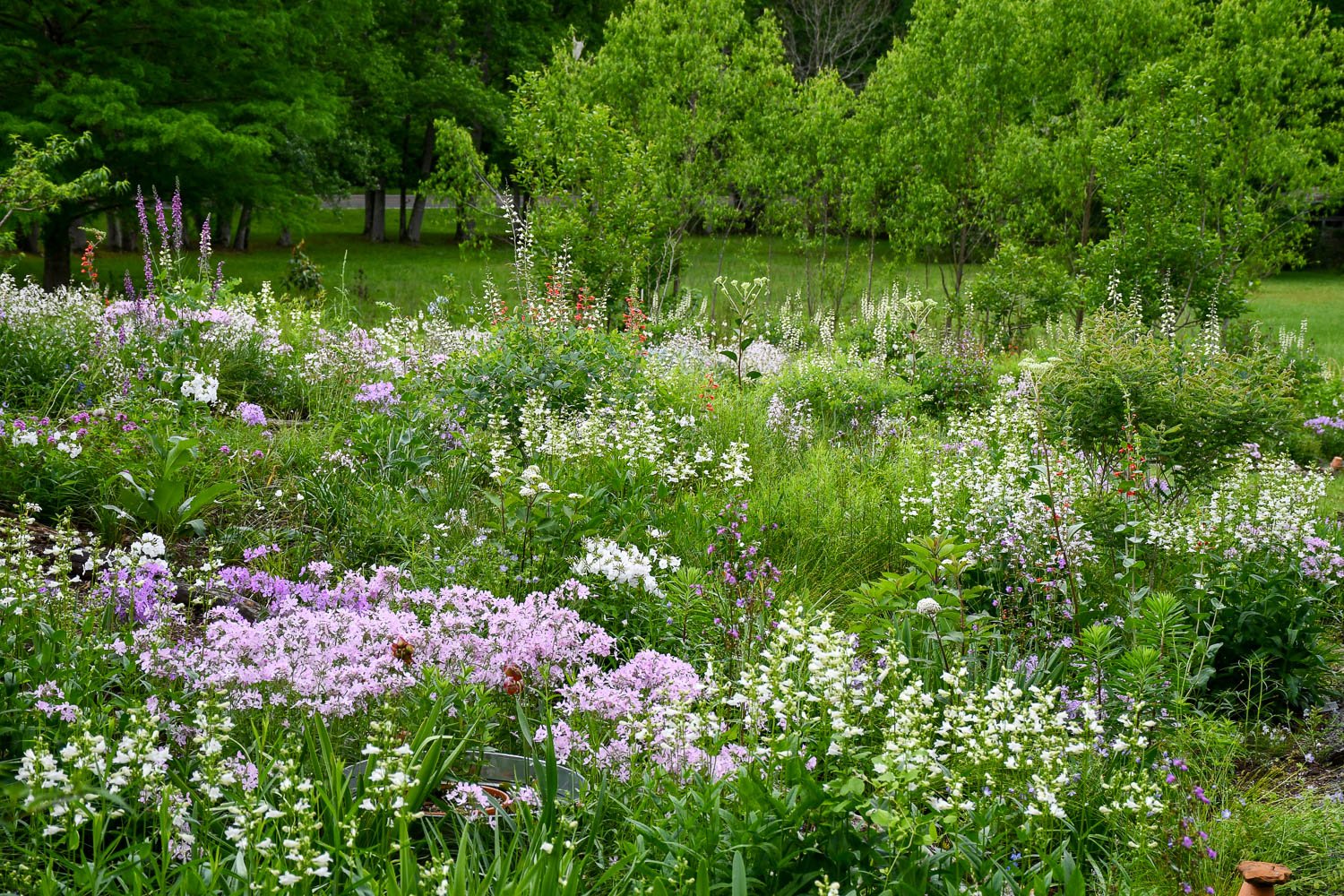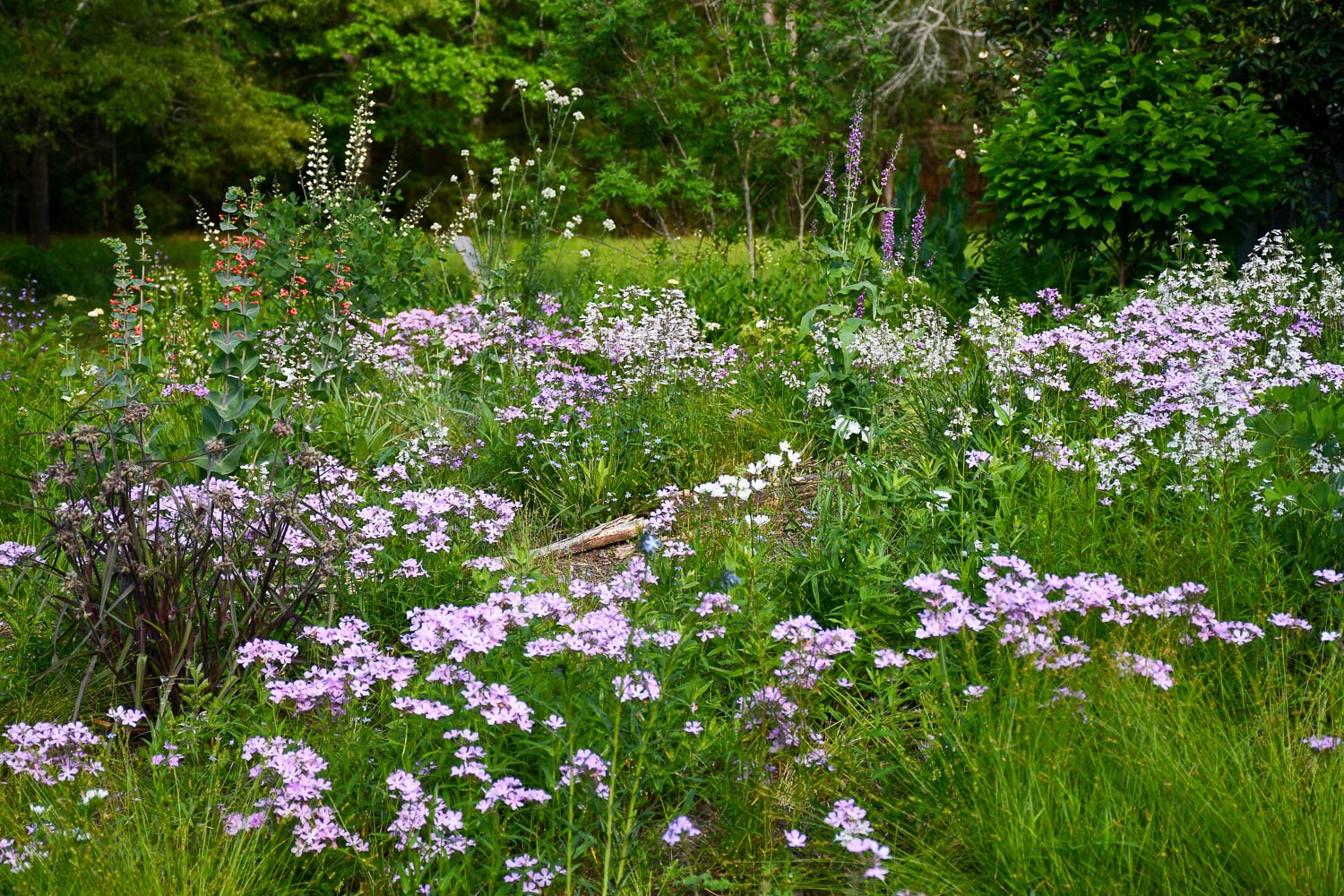Grades are entered, and the school year is over for me.
Whew.
I’ve been in reflection mode lately as it feels for the first time in 10 months that I’ve had a chance to breathe.
Sure, teaching, running a student botanic garden, giving presentations across the country, hosting a podcast, and then writing a weekly newsletter is a full life, but after throwing a first child into the mix last July, well, suddenly priorities drastically shift. Being inside listening to baby belly laughs beats pulling weeds.
But, I’ve barely planted the vegetable garden for the summer, weeds abound, and there are spots I have yet to mow out back.
It’s not all on me. The soil has been so wet, wetter than the last few years, that recent time outside is often spent watching the rain. This spring is one of those similar to when we first moved in where water would run through the property almost to June, and I would discover all the places I could get my mower stuck. It makes it harder to tend the ground, but I know we’ll be wanting the moisture come August.
The light beds in their spring glory
However, even though I’m behind on other areas of the garden, the light beds near the house have looked smashing this spring, to the point where I’ve gone from imposter syndrome with this whole naturalistic planting thing to thinking I’m onto something.
We’ve lived at Ephemera Farm for 7 years, going on 8 in August. And, in this time I’ve watched this space evolve. The beds, named for the way that light interacts with the plants throughout the day, started as trial spots where I threw plants into the ground after I cleared out the crape myrtles and turf near the garage. Deer were wary to come this close to the house, and the higher ground didn’t flood and quickly drained after a rainstorm. I watched what lived and died and replicated what was successful.
A pathway leads through a verdant planting at Ephemera Farm.
At first these beds were disparate with different species in each one of them so that the plantings in one didn’t feel connected with the other. Paths that I made felt more like borders separating space instead of a way through the planting.
So, I started replicating species on both sides of the paths and scattered them throughout the beds to create a sense of community. To further create harmony, I chose species that offered a cool color scheme featuring pink, blue, and purple with neutral white and pops of red and coral. I then added other beds on the west side of the drive near the orchard to make it have more continuity for the long view.
Cool colors abound in the light beds in the spring.
Amsonia hubrichtii (Arkansas bluestar) offers a lovely pastel blue color in the garden.
The light beds continue into the orchard to give a greater sense of depth of the landscape.
I look at the light beds and sometimes think that it’s all too much. I’ve made hard calls to simplify the plantings. I’ve removed Liatris microcephala (Appalachian blazing star) that seems to struggle in our wet soils and edited out the Liatris pycnostachya (prairie blazing star) that fall over. And, I dug out the Gladiolus communis ssp. byzantinus (Byzantine gladiolus) that were too much intense color for the area. I’m left wondering should I remove more?
Is it all too much?
Sometimes editing happens on the fly. A lone Hymenopappus artemisiifolius (old plainsman, left of center) that had seeded itself into these beds didn’t seem right for this planting so out it went.
There, that’s better.
But, I have to remember my garden is also a repository. There are plants like Penstemon murrayanus (scarlet penstemon). The original population of plants is gone, bulldozed two years ago and the site never built upon. Where my Baptisia alba (white wild indigo) originated there’s now two driveways through that spot.
I mean, who could bulldoze this incredible native, Penstemon murrayanus?!?
Penstemon murranyanus in the orchard
Baptisia alba is an incredible primary plant to have bloom in the spring.
There are still things I need to fix. Phlox pilosa (downy phlox) is beginning to get away from me some, but reducing its sprawl is an autumn and winter task I can tackle later. In the orchard last year, I planted a mix of Penstemon laxiflorus (nodding penstemon) and Oenothera (Gaura) lindheimeri ‘Sparkle White’ (gaura). I anticipated the gaura flowering later, but they flowered at the same time, and it was too much and too blended together. I’ve made notes to separate them next year, and space them out more.
Maybe there’s too much phlox?
Pink froth in the orchard from Penstemon laxiflorus and Oenothera lindheimeri ‘Sparkle White’. Which is which? Hard to tell but an easy fix this winter.
The one thing I feel like the beds are still lacking is a solid ground cover layer. Carex texensis (Texas sedge) is doing well, but this time of the year it can start looking gangly with the long scapes after setting seed. I cut them back to start with a fresh clump. Muhlenbergia reverchonii (rose muhly) is quickly becoming a favorite. After a couple of years in the ground it has already become a robust grass in the spring. The height is not too bad for later in the year. And, Sporobolus heterolepis (prairie dropseed) is doing well where the clumps have had time to mature. But, many plants and divisions are still quite young. I sow seed when I can, but patience must be had with that plant.
I’ll add that my thoughts on relying solely on plants to cover the ground have also changed. After a years long battle with trying to get gripeweed (Phyllanthus urinaria) under control, I’m finally having success with bark mulch to prevent germination. It’s amazing how the little seeds seem to get into everything, even the crowns of plants. So, it’s a bit of a hybrid approach. Cover as much of the ground with plants as possible, but sprinkle in some mulch to cover the bare spots.
A part of the light beds where the groundcover layer has filled in well.
Carex texensis at the front of this image can get a bit wild looking toward the end of April.
I’m not done replicating what works. My next big task is to take divisions of the most impactful and ecologically beneficial plants and incorporate them into the front fences of the patch to have harmony with the current plantings. I’m going for the reclaimed fencerow aesthetic.
The patch fence seen behind the chairs is the next project here at Ephemera Farm. The goal is to use species in the light beds to create cohesion for the areas.
Now that we are in May, I’m not the only one taking a breather. The light beds have slowed down, too. Most of the photos above are from mid-to-late April. The spring rush of color is over, and in early May there is a break before the riot of Echinacea and Pycnanthemum begin. The garden’s pause is a reminder that balance is essential. Just as the light beds take a break, I, too, find solace in this slower time.
















